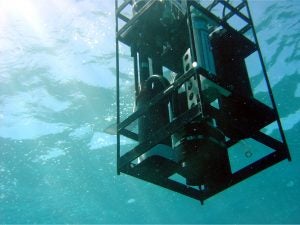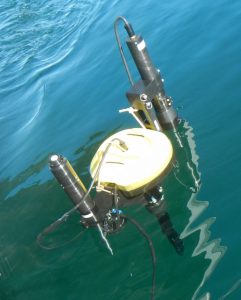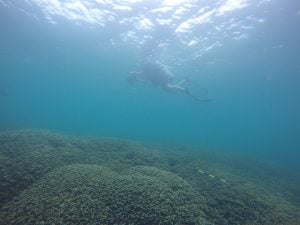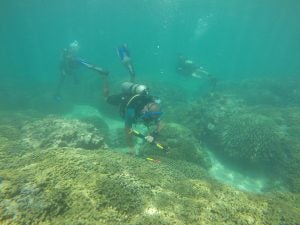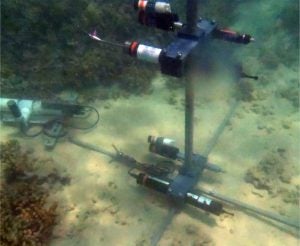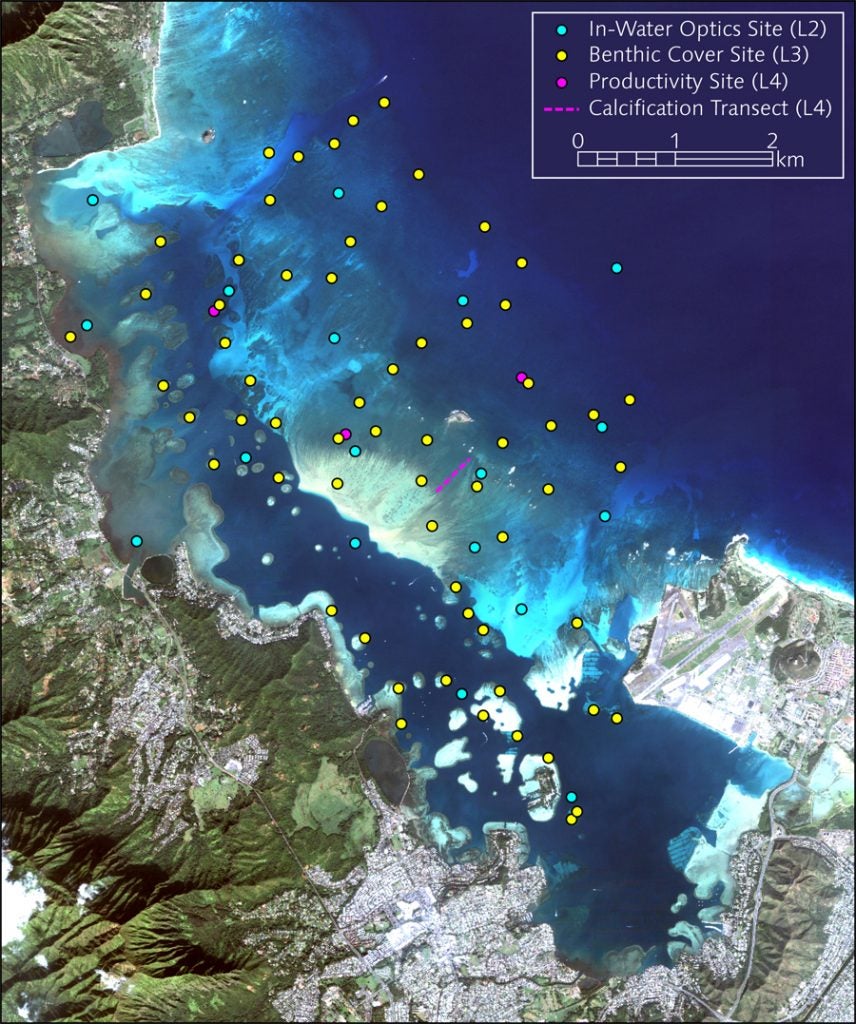In-water (in situ) measurements are required to validate CORAL data products. During CORAL field campaigns three types of data will be collected:
Optical
These data will help validate algorithms that predict how light travels through the atmosphere and water column. CORAL scientists will deploy a system of floating sensors (left) across each study site, timed to coincide with flyovers of the plane and PRISM instrument.
The Hyper-SBR instrument will measure downwelling irradiance (light traveling downward to the surface of the water) and upwelling irrandiance (light leaving the water’s surface). This instrument will be provided and deployed by Dr. ZhongPing Lee, Professor of Optical Oceanography, School for the Environment, University of Massachusetts Boston, and a CORAL Co-Investigator.
The IOP (inherent optical properties) cage contains sensors that measure the seawater’s optical properties and the scattering of light at different angles in the water column. These data tell us how light travels through the water: how much is absorbed, how much is scattered, etc. This instrument is owned by the University of Hawaii and will be deployed by Dr. Heidi Dierssen, Associate Professor of Marine Sciences/Geography at the University of Connecticut, also a CORAL Co-Investigator.
- The IOP (inherent optical properties) cage
- The Hyper-SBR instrument
Reef benthic cover
At each study site, CORAL scientists will digitally record the composition of the benthic (seafloor) surface by taking hundreds of overlapping high-resolution photographs within 10 square meter survey sites.
- A diver taking photographs as part of the benthic mapping portion of in-water validation
- Divers laying survey markers in Kaneohe Bay
Back in the lab, these photographs will be automatically stitched together in a mosaic with specialized computer programs, after which standard methods will be used to identify the proportional coverage of sand, coral and algae in each image.
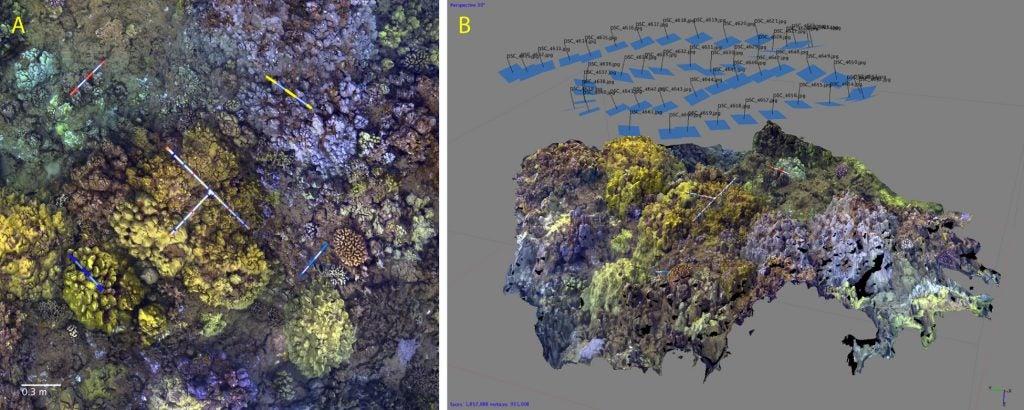
An example of a single reef survey photo (left) and a photomosaic of an area of reef, comprised of multiple photos (right)
Reef biogeochemistry
At each study location CORAL scientists will make in-situ measurements of benthic community productivity with two gradient flux moorings. This suite of instruments includes oxygen sensors, acoustic Doppler velocimeters (to measure water flow), CTDs (to measure conductivity, temperature and depth) and PAR sensors (to measure light incident to the reef surface). These sensors will be deployed by Dr. Bob Carpenter, Professor at California State University Northridge, also a CORAL Co-Investigator.
The result of these in-situ measurements will be a map of data points that will calibrate and validate the remote sensing data collected by PRISM.


